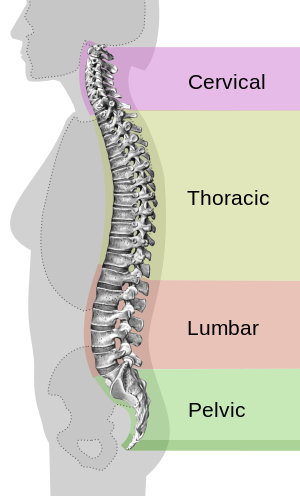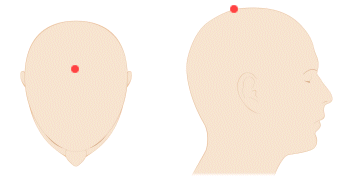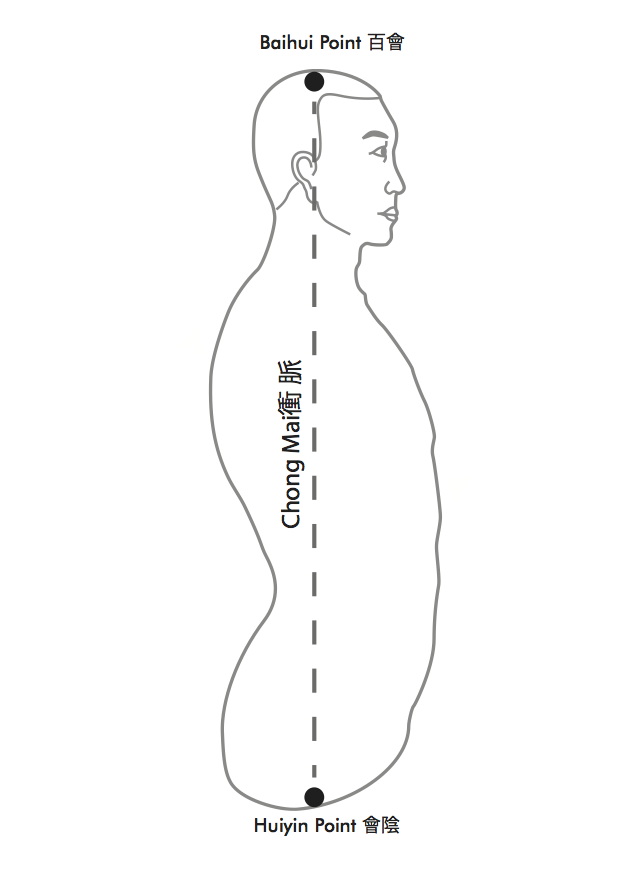SN 54.3 Suddhika
(0. preliminary steps to 16🌬️😤 )
[0.1] 🏞️ arañña-gato vā
| [0.1] 🏞️ (to the) wilderness-(he)-went, or |
🌲 rukkha-mūla-gato vā
| 🌲 (to the) tree-root-(he)-went, or |
🏕️ suññā-(a)gāra-gato vā
| 🏕️ (to the) empty-dwelling-(he)-went, ** |
[0.2] nisīdati
| [0.2] sits down |
[0.3] 🧘 pallaṅkaṃ ābhujitvā
| [0.3] 🧘 (into)-cross-leg-posture (he)-bends, |
[0.4] 🏃📐 ujuṃ kāyaṃ paṇidhāya
| [0.4] 🏃📐 straightened body (he)-aspires (to), |
[0.5] 🌬️😤 pari-mukhaṃ satiṃ upaṭṭhapetvā.
| [0.5] 🌬️😤 Near-(the)-mouth, remembrance he-establishes. |
[0.6] 🐘 So sato-va assasati,
| [0.6] 🐘 He, Always-a-rememberer, breathes in; |
Sato-va passasati
| Always-a-rememberer, breathes out. |



Introduction
[0.4] 🏃📐 ujuṃ kāyaṃ paṇidhāya[0.4] 🏃📐 straightened body (he)-aspires (to),
This really important instruction in 16 APS (breath meditation), is often misunderstood and overlooked.
For emphasis, I've numbered the steps that occur in the sutta instructions that occur right before 16 steps of 16 APS proper (digham va assassanto...).
Misunderstanding #1:
Straightened body is just a preliminary prerequisite before actually doing proper sitting meditation. You just check it once before you start 16 APS, and then check that off your list.
Actually, especially once you can do jhāna easily and have developed the automatic habit of doing passaddhi (pacification, relaxation) at all times, all postures, you'll realize through your own experience, especially when you attempt long sitting meditation sessions, that this instruction to straighten the body actually needs to be checked quite frequently while you're doing 16 APS.
For example, try doing 16 APS standing instead of sitting. Unless you've entered an arupa samādhi while doing 16 APS, you've unconsciously at pretty frequent intervals, checked whether your body was straight and balanced. If you didn't your body would sway and lean and even fall over.
This very important instruction AFAIK doesn't get any detailed commentary in the EBT itself.
And there are very important details you'll have to know to preserve good spinal health, especially if you follow many popular Theravada traditions like Burmese lineages that place great value on doing long sitting sessions, and ignoring body pain to do so.
Problem: Good posture (neutral spine) curves often get flattened and strained
when changing from standing posture to cross leg floor sitting posture
This is because back and leg muscles, tendons, tissue, are too tight. So when the legs are bent at the waist at a 90 degree angle to the spine, you lose the proper concave curve in the lumbar lower back area. The spinal vertebrae there straighten up, or even go from concave to the opposite convex curve! This is really bad, and you won't be able to sit for long (not just in a session, but for long term meditation practice in years) before injuring your lower back from compressing the spine, and getting drowsy after a while from diminished circulation of blood and qi.
What's the solution?
1. yoga, taiji, qigong, other good mobility and pliability exercises done daily to soften tight tissue in the whole body, especially back and legs.
2. proper posture and alignment at all times, whether standing, sitting, walking, driving a car, eating sitting at a table, reading a book.
3. proper pacification/relaxation of whole body. Even if you do #1 and #2 correctly, if you have tight areas of the body accumulated from your life that have not been dissolved or soften sufficiently from exercise yet, it will be difficult to accomplish correct spinal posture when you transition from standing to sitting cross legged. So you need to make adjustments, instead of sitting 90 degrees between legs and spine, you'll need to sit on a higher seat, to increase the angle between legs and spine to be more than 90 degrees.
1. yoga, taiji, qigong, other good mobility and pliability exercises done daily
especially see FLT full lotus turtle section and 8 pieces of gorilla.
2. proper posture and alignment at all times,
whether standing, sitting, walking, driving a car, eating sitting at a table, reading a book.
for full lotus posture, and cross leg seating in general:
spinal vertebrae needs to be effortlessly stacked up on top of each other, including skull and bai hui point (that little indention near the middle of the top of your head), lining up vertically with tail bone hui ying point (near tail bone), see diagram above.
how to test for correct posture:
A. knees and lower legs are firmly contacting the ground, not hovering and wobbling because of tight hip and leg tissue pulling it up off the ground. If your knee(s) and lower leg(s) are hovering, you need to need to elevate spine sufficiently by sitting on a high enough cushion opening the angle between your legs and spine (side view) to more than 90 degrees. As your daily yoga and exercise program soften you up, you can gradually decrease height of cushion.
B. The neutral spine (good posture), with the spring like curves on the vertebrae needs to be the same whether you're standing or sitting. So if you lose your spinal curves when you sit, then even if you passed the test (A) above for solid leg and knee base with firm contact on the ground, again you'll need to elevate your height with a seat cushion. Especially check your lumbar curve, by comparing standing up backed up against the wall, how much of your finger and hand you can slide through between the wall and your hand, verses when you're sitting down.
3. proper pacification/relaxation of whole body.
In other words, your bai hui point (near top of head), hui yin point (near tailbone) are vertically lined up, and the vertebrae are stacked up effortlessly and balanced, so it you don't have to engage your core /abdominal muscles (if you're leaning body backwards slightly), or engage your back muscles (if you're leaning forward slightly).
Test out cervical low back relaxation
In both sitting and standing.A. lean your body slightly forward. place your hands on your back muscles and feel how tight they are. Now lean it back until you're straight, and then leaning backwards. Notice how the back muscles become as soft as tofu or soy milk.
B. conversely, place your hands on your belly area. Lean backward, and notice how the further back you go the abdominal muscles get tighter and tighter. Now lean forward and notice when the belly and abdominal muscles become relaxed and soft like tofu or soy milk.
C. Now do micro movements, subtle leaning forward and backward, until both your belly abdominal and back muscles remain soft like tofu or soy milk. Probably most of us have some postural imperfections, and won't be able to do this perfectly. But we should get in a habit of doing this test on ourselves at least once a day to check our progress.
D. After you've normalized with a correct posture, and you're skilled at step 3 of 16APS (sensitive to subtle sensation of every cell of your entire body, including tissue near spine), you won't have to use your hands to check for softness, you can just scan with your mind to confirm tofu or soy milk like softness.
Test the neck (cervical vertebrae)
In the modern lifestyle, with the horribly non ergonomic way most kids in school sit at a desk to read/write and study, and people at the office work at a desk in front of a computer, to people in their leisure time slouching into a couch slumping in a bad posture to watch television, or people craning their head down to stare at their cel phone all day, the neck area for most people has devolved into a craning forward wrong posture, compared to the neutral spine (correct posture) where bai hui point on top of head, lines up vertically with hui yin (near tailbone).The problem is so bad people's perception of what "normal" correct neck and head position relative to the neutral spine, is skewed, so when they stand or sit in meditation, they don't have an accurate kinaesthetic feel for what "correct neck and spine" posture is. In other words, in sitting meditation most people, even after deliberately trying to establish correct posture of spine and neck, will still be in a slumped, head craning forward posture, but it feels "normal" and "correct".
So until you do enough exercise and posture fixing to establish a correct normal, you will probably have to use a few external aids to check your neck and spine alignment. Some ideas:
1) keep mirror next to where you sit, big/long enough to see your neck and good portion of your upper torso relative to vertical reference point like wall, and/or horizontal reference point like floor.
2) use portable digital camera and take a picture of yourself from the side.
3) sit in a location where you back is very close to being in full contact with the wall, for example your tail bone is one inch away. Then when you want to check alignment, you lean back towards the wall and make contact with the back of your head. Then you can mentally calibrate that and get a sense of what perpendicular and vertical correct alignment should feel like (approximately).
Test neck cervical softness front, back, sides
Use the analagous A & B & C tests you did in the previous section testing your belly/abs and lower back by placing your hands on them and confirming the muscle, tendons, are soft like tofu or better yet soy milk.tip: if your neck is still tight even after you've correctly lined up and balanced alignment, the tension is just accumulated chronic knots you'll have to work out with accupressure, massage, exercise. As people get older, the sides of their neck get super tight. This is because when we walk and go through daily life physical movement, we use those side neck muscles to keep our head from rotating left to right (to keep our vision steady and not jerking around).
The real test of passadhi
Now the real test of passadhi/pacification is if you get pīti/sukha (bliss factors) of jhāna. If your mind and body are not truly pacified, jhāna won't happen.
For example, those who use too much physical force to maintain correct posture, maybe not to the point of getting fatigued or sore after a long sit, but enough to hinder kāya (body) pacification enough to prevent jhāna from happening.
For example, those with western military ram rod straight posture mentality, or Indian yoga forcefully opened chest (jutting out) and ribcage, you'll know you're using too much force if it blocks you from the full power of pīti sukha bliss that you can get in a completely relaxed posture like lying down, or floating in the water. If you're body if fully relaxed, you'll feel that qi isn't hindered from flowing smoothly down your head through your throat, chest, to belly.
Strange Paradox
There are expert master meditators, who can do 4 jhānas, and arupa samadhi attainments, yet in their old age, perhaps from over zealously sitting too long in a single session and ignoring body pain, develop debilitating back injuries from cross leg sitting, partially paralyzed extremities, and other problems.Don't let that happen to you. Take good care of your body. Don't think "oh I'll just do an arupa samadhi to escape body pain if it ever gets that bad." If you injure your body sufficiently, you'll most likely lose your ability to do arupa samadhi!
Misc. Notes
without mirror
lean back until abdominal muscles slightly engage/tighten.
pelvic tilt down
increase concave curve of lumbar region
pull chin inwards
while keeping head level
(head not tilted up or down)
gaze is parallel to ground,
to get concave curve of cervical neck area,
and line up bai hui with hui yin
thoracic area
double elbox strike back to open rib cage, shoulders
or spread arms wide and push back
standing and walking meditation
never lock knees, always 5 bows of body
walking meditation
walk down hills sideways with kung fu shuffle, (sideways version of cat step protocol)
with 5 bows and no locked knees, to prevent knee and back injury
perpetual motion
driving 8 hours on road, always doing flying cat cow and turtling.
never lean back and rest of back of chair, always hold yourself up
eating: every bite, lean in to avoid food spilling, then straighten up
get rid of couch.
chair postures
tree hugger, arms on table to learn what fully relaxed arms and shoulders can feel like
relaxed chair full lotus
in floor FLT, my legs and belly heat up like luxury car heated seat warmer.
Comments
Post a Comment